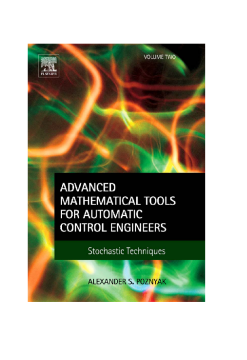
Additional Information
Book Details
Abstract
Advanced Mathematical Tools for Automatic Control Engineers, Volume 2: Stochastic Techniques provides comprehensive discussions on statistical tools for control engineers.
The book is divided into four main parts. Part I discusses the fundamentals of probability theory, covering probability spaces, random variables, mathematical expectation, inequalities, and characteristic functions. Part II addresses discrete time processes, including the concepts of random sequences, martingales, and limit theorems. Part III covers continuous time stochastic processes, namely Markov processes, stochastic integrals, and stochastic differential equations. Part IV presents applications of stochastic techniques for dynamic models and filtering, prediction, and smoothing problems. It also discusses the stochastic approximation method and the robust stochastic maximum principle.
- Provides comprehensive theory of matrices, real, complex and functional analysis
- Provides practical examples of modern optimization methods that can be effectively used in variety of real-world applications
- Contains worked proofs of all theorems and propositions presented
"This is a very well-written introduction to the basics of probability theory, stochastic analysis and their applications. Automatic control engineers will surely find much valuable material on different topics of modern and classical mathematics related to system and automatic control theories. In addition, this book may well serve as a reference book for researchers in applied probability theory and stochastic analysis…. Overall, this book is self-contained, well-organized, and clearly presented. It is a welcome addition to the existing collection of books in the field of probability and stochastic analysis, booth as a textbook at the graduate level and a reference book for researchers in this area." --Mathematical Reviews
